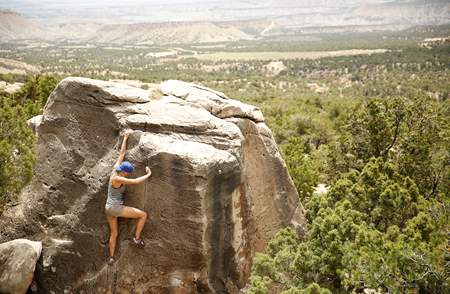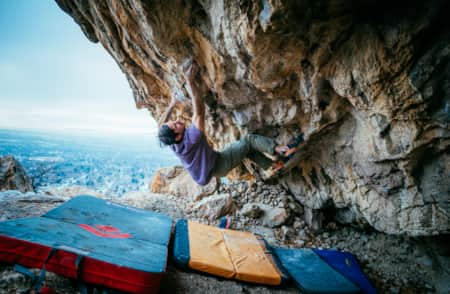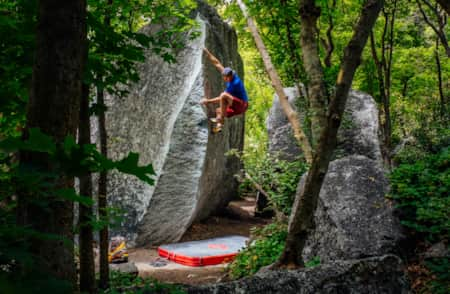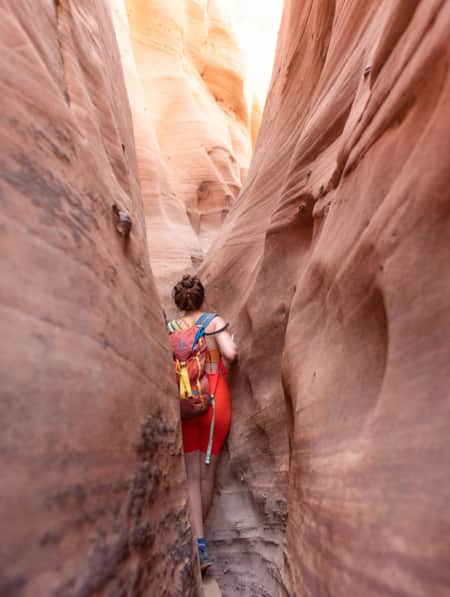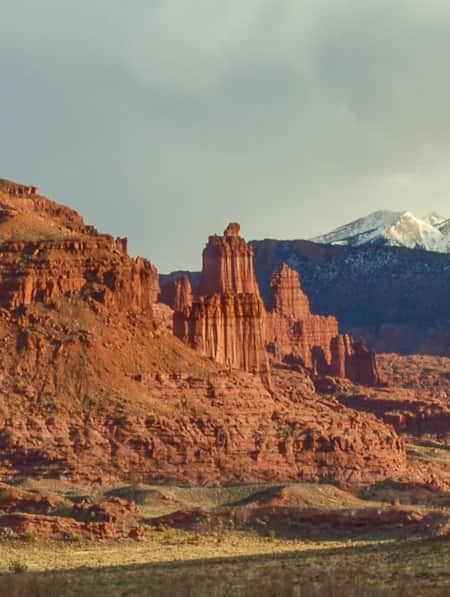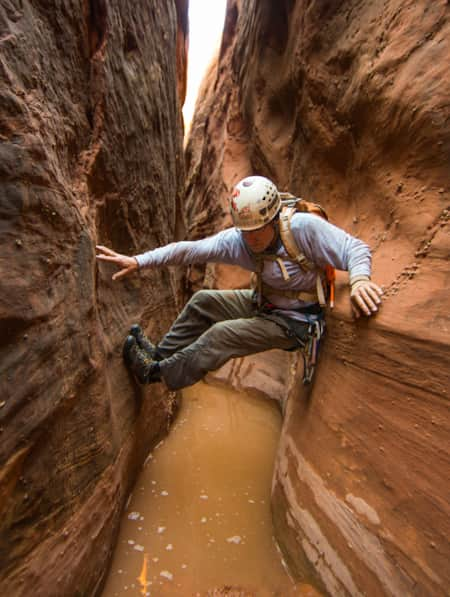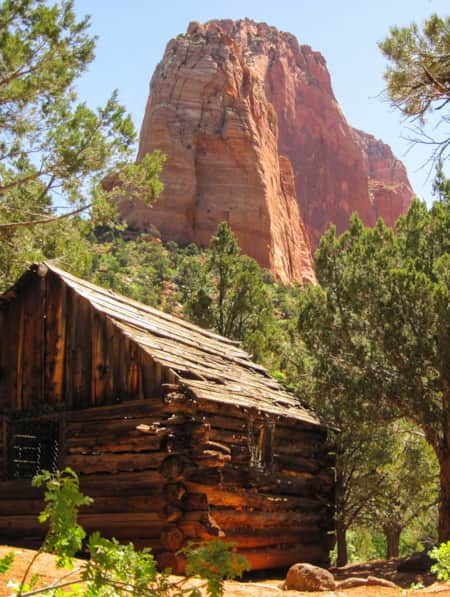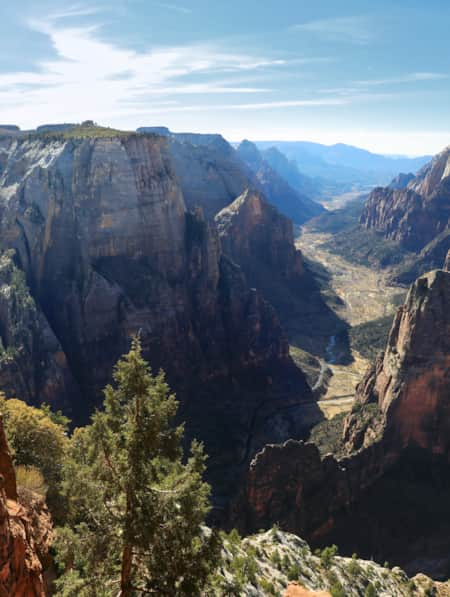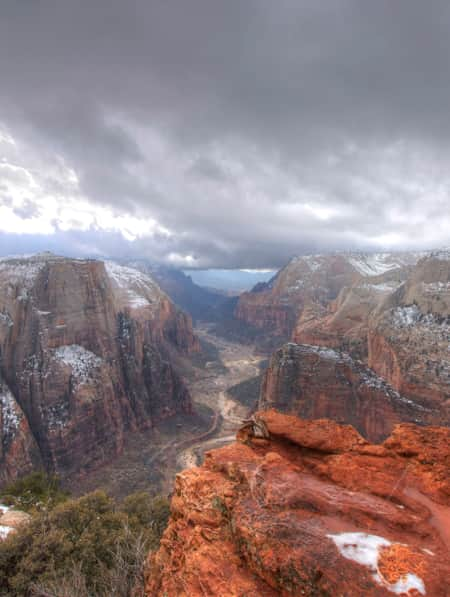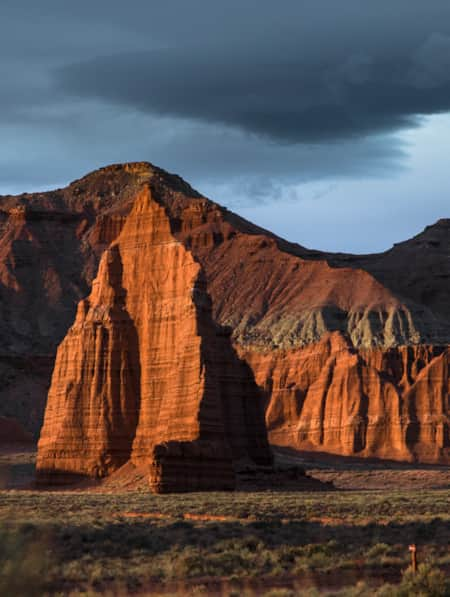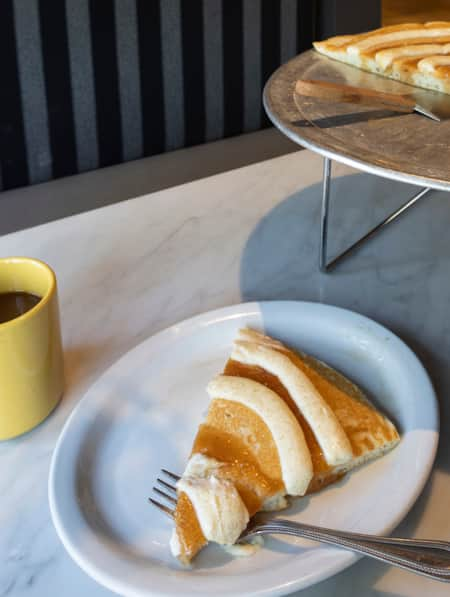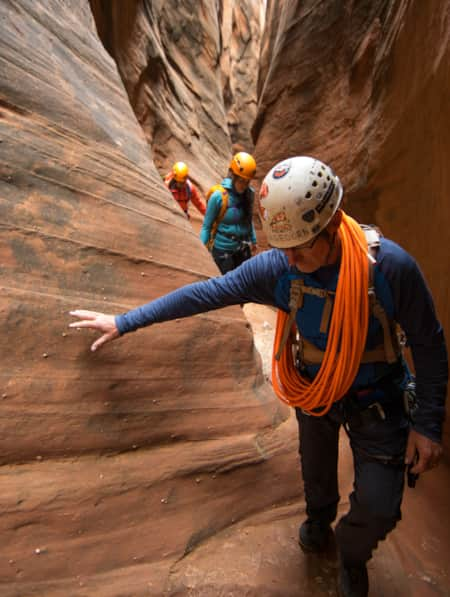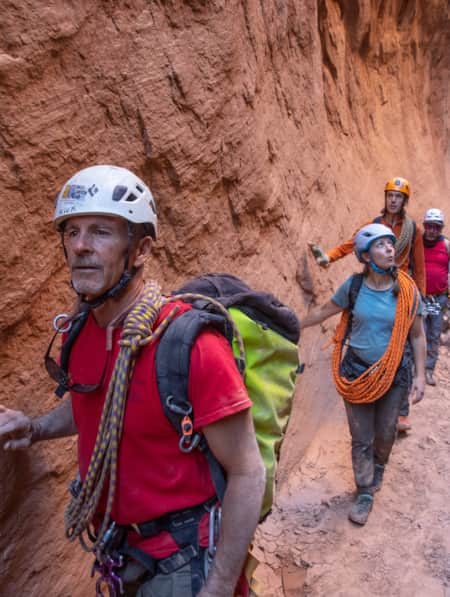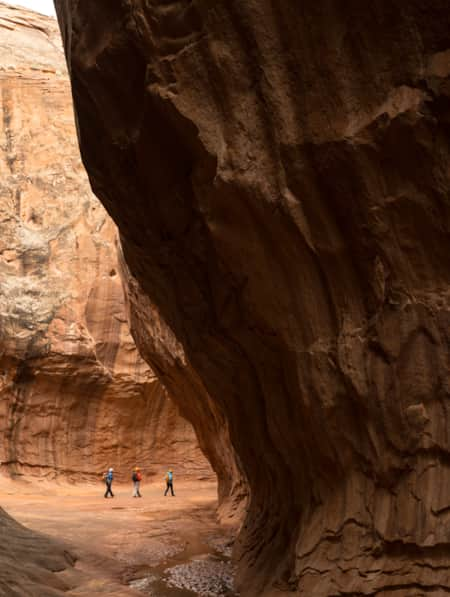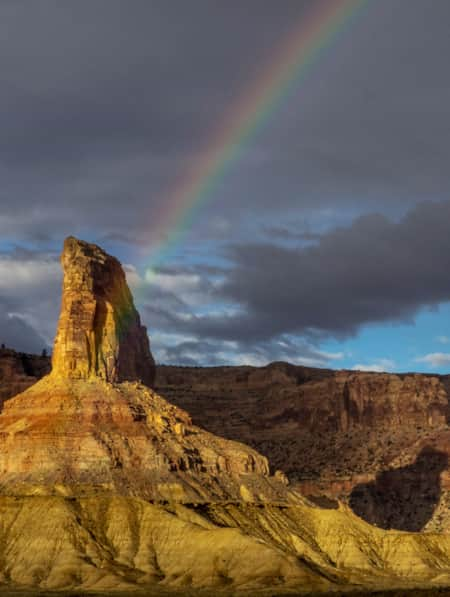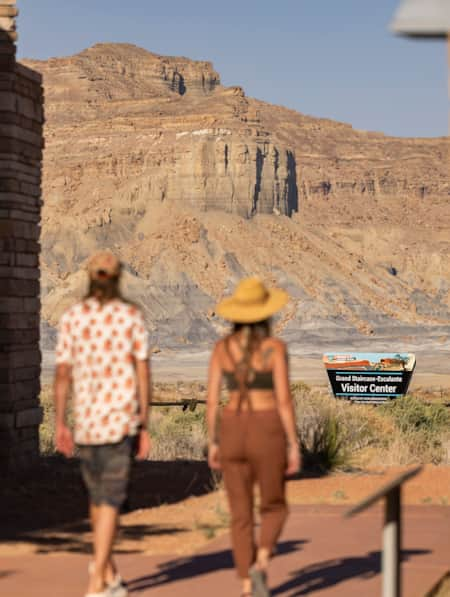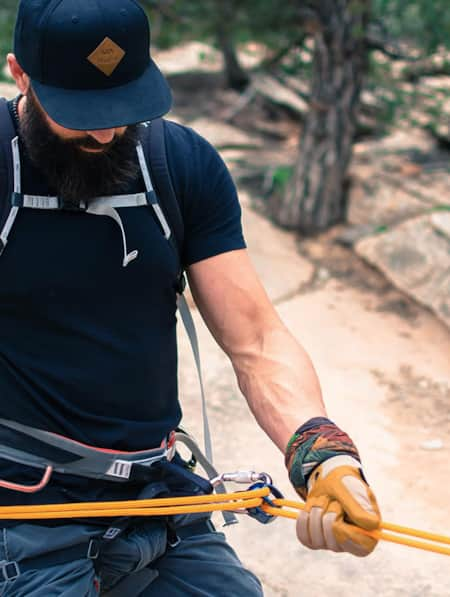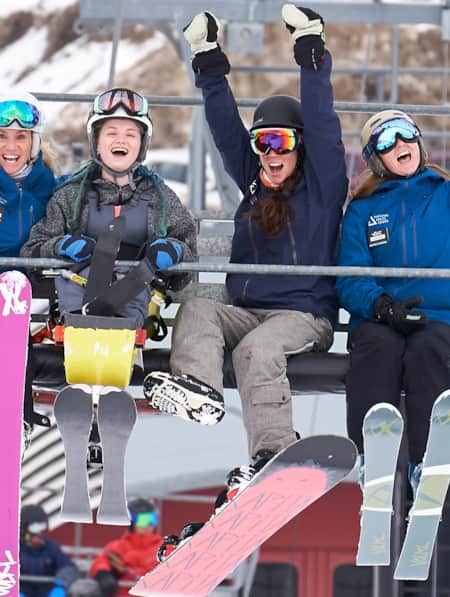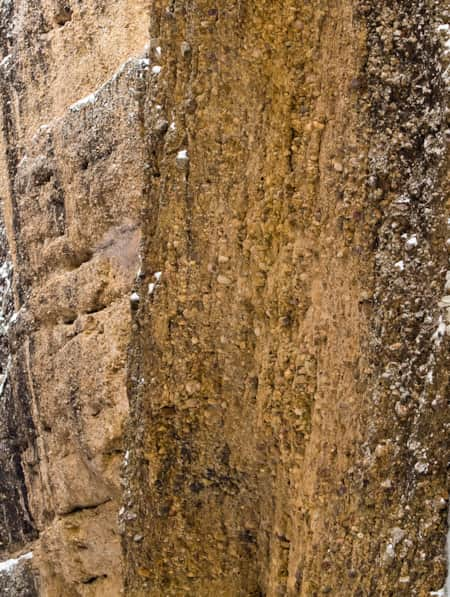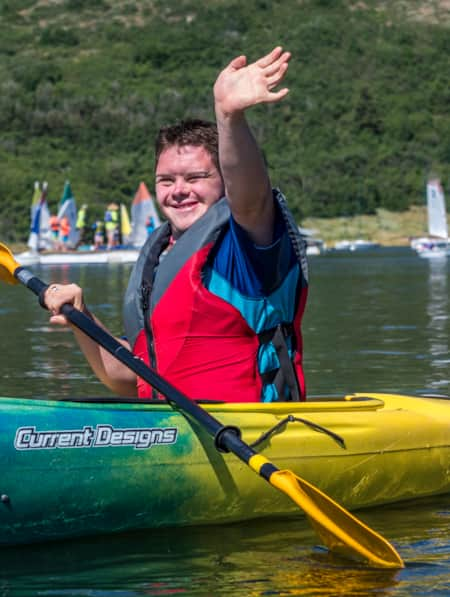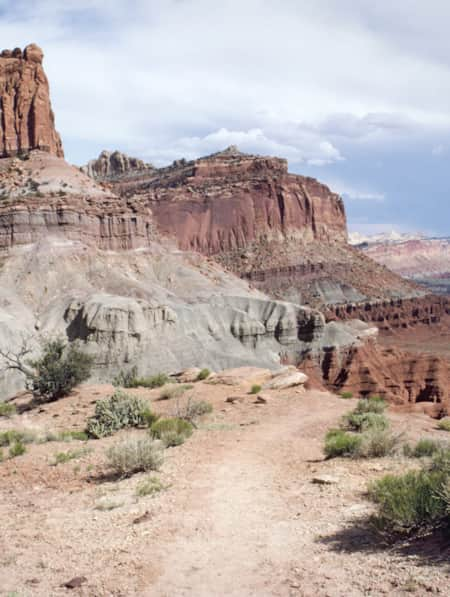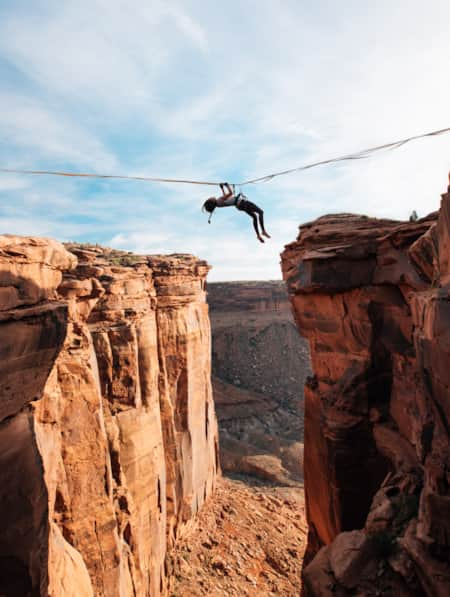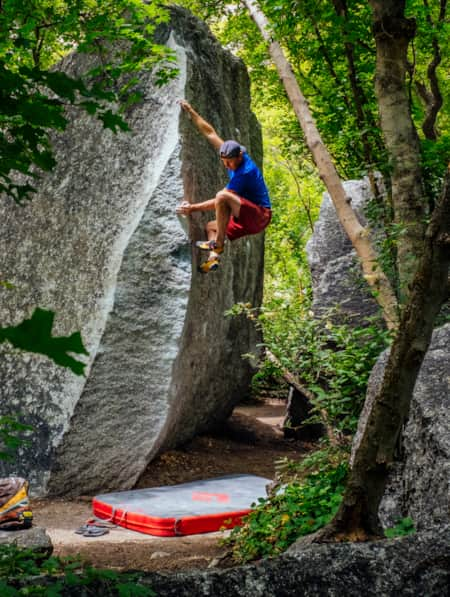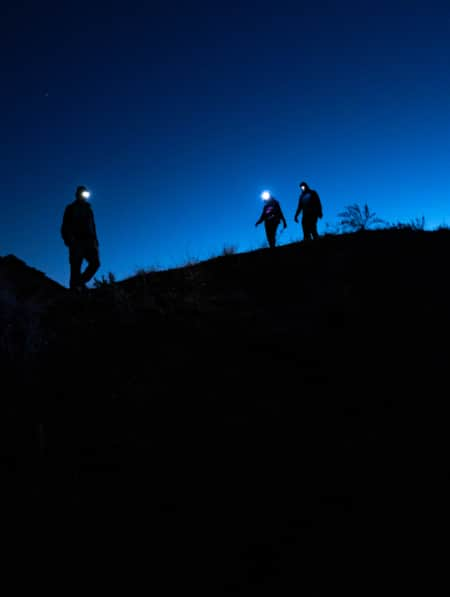Best Rock Climbing in Utah
-

Joe's Valley
Surrounded by pine-covered peaks on the Wasatch Plateau and grassy meadows filled with blooming wildflowers, this secluded mountain basin attracts all sorts of outdoor enthusiasts. But on the east side of Joe’s Valley Reservoir, where the emerald water escapes by finding its way through the craggy sandstone canyon below, people come to climb. Notably, the challenging varnish-streaked boulders draws climbers from around the world for the annual Joe’s Valley Bouldering Fest.
-

Logan
Located about 80 miles north of Salt Lake, and just 20 minutes outside the town of Logan, the canyon’s climbing doesn’t disappoint. The limestone canyon offers hundreds of single-pitch sport routes with offerings for everyone from the first-timer to the international crusher. Mile 385 is a great starter crag with shady routes right off the road and offers grades from 5.10 to 5.12. If you’re looking for something a bit more stimulating, the China Cave provides legendary historical routes like Super Tweak, 5.14b.
-

Maple Canyon
ocated about 90 minutes south of Salt Lake, just beyond Nephi, Maple is a beautiful canyon filled with conglomerate sport climbing. Not as cryptic as its limestone neighbors, the climbing here is largely endurance based on larger holds and ranges from steep to completely horizontal. The Pipe Dream cave is a sight to behold and bristles with long endurance routes out the giant ceiling. The Great Feast, 5.13b, takes a direct line out the middle. The popular Minimum Wall provides options with a little less angle. And the 49 route at 5.12a is the classic here.
-

Moab
The deserts of southeastern Utah have always tempted rock climbers. Moab provides central access to the greatest collection of legal desert spires in the U.S., such as Castleton Tower and Fisher Towers. Eleven miles from the middle of Moab, off the Colorado River corridor on State Hwy. 128, Big Bend Boulders offer an experience in Wingate sandstone scrambling on 16 climbable boulders, with more at the riverside.
-

Ogden
Heralded as one of the top climbing towns in the U.S., Ogden offers everything from winter bouldering to sport climbing and long adventure routes within a few minutes of downtown. For a wild multi-pitch excursion try the legendary Jeff Lowe’s Macabre Wall Proper, the first 5.12 in the country. The hills above town offer world-class bouldering with problems ranging from the three-star V3, Hidden Rock Traverse, to the savage, Breaking the Wheel, V15. One can even sport climb without leaving city limits. The 9th Street crag has routes ranging from 5.6 to 5.13 with Cracked Lip, 5.11b, a local favorite.
-

Salt Lake City
Big Cottonwood Canyon is the closest to downtown Salt Lake, with a casual 15-minute drive. Big offers everything from roadside multi-pitch traditional routes to single-pitch bolted lines and everything in between on metamorphic quartzite. Just a few minutes south is Little Cottonwood Canyon. The climbing here is more concentrated than in Big, but there’s just as much variety plus the addition of world-class bouldering. Featuring fine-grained white granite (the Salt Lake Temple was quarried from here), climbing opportunities are endless regardless of season. Salt Lake City also boasts one of the largest concentrations of world-class climbing gyms in the world, including The Front, Momentum, Bouldering Project and more.
-

St. George
St. George offers access to some of Utah's most challenging climbing and bouldering, including aid climbing on the "Big Walls" in Zion National Park, sport climbs in the Virgin River Gorge and a base for three bouldering adventures, Pioneer Park, Green Valley Gap and Moe's Valley.
-

Zion National Park
Legendary for its world-class multi-pitch trad climbs, Zion is a climber's mecca. Spaceshot (5.7, C2) and Moonlight Buttress (5.8,C1) are among the most well-known aid climbs anywhere. Great rock all around, big walls and memorable desert landscapes await.
For more details on climbing areas and specific routes in Utah, visit Utah's Mountain Project.
For more details on climbing areas and specific routes in Utah, visit Utah's Mountain Project.
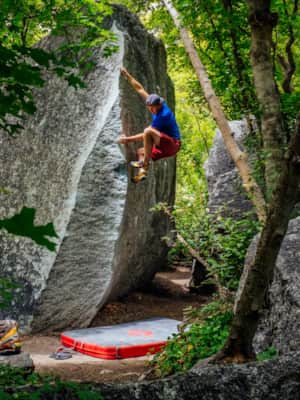
Where to Climb Near Salt Lake
From Maple Canyon to Logan Canyon and spots in between, explore Northern Utah’s rock climbing legacy and iconic routes to add to your adventure itinerary.
"Whether it's a short scramble over a boulder field, or spending a whole day on a super technical 5.10 route, Utah offers climbers all the challenges they can handle."
Climbing in Utah 101
-
Aid Climbing
Aid climbing refers to climbs where the climber weighs pieces of protection to get farther up a climb. Small ladders, rope pendulums and hand-pulled pieces of webbing all play a part. The counterpart to aid climbing is free climbing—where gear is intended only to protect from a fall, not to be weighted or used to advance up the climb.
-
Bouldering
Bouldering is done without ropes and tends to focus on short, precise problems. Crash pads used in conjunction with human spotters minimizes injuries. Bouldering is usually done close to the ground, but "high-balling" stretches the definition by pushing unroped climbing 25 feet or higher.
-
Indoor Climbing
"Pulling plastic" is a fun way to stay in shape, learn climbing fundamentals and hone movement skills. Most indoor gyms feature bouldering areas, top ropes and lead climbs of all levels. Indoor gyms are a great place for kids and families as well.
-
Multi-Pitch Climbing
Multi-pitch climbing can be sport or trad. These climbs require climbing teams to set up anchors and belay stations along the route. A lead climber will set an anchor, then belay the second (or more) climber(s) up. From there, the next lead pitch runs out from the anchor point.
-
Sport Climbing
Sport climbing uses pre-placed anchors and bolts. Climbers are able to focus on technique without worrying about protecting the climb beyond placing quickdraws and tying into an anchor. Sport climbing can be single-pitch or multi-pitch.
-
Trad Climbing
Traditional climbing requires climbers to place protective gear as they ascend. Most trad climbs require anchor building skills as well.
